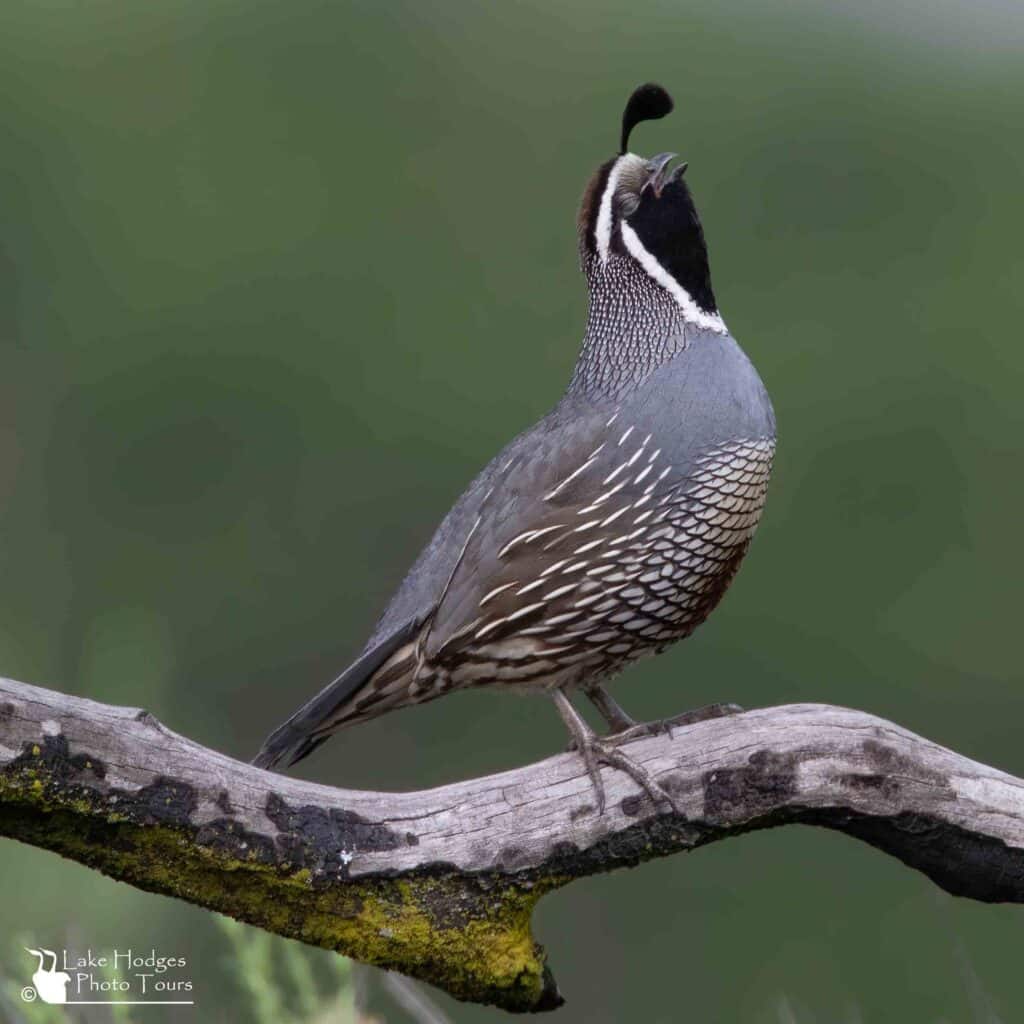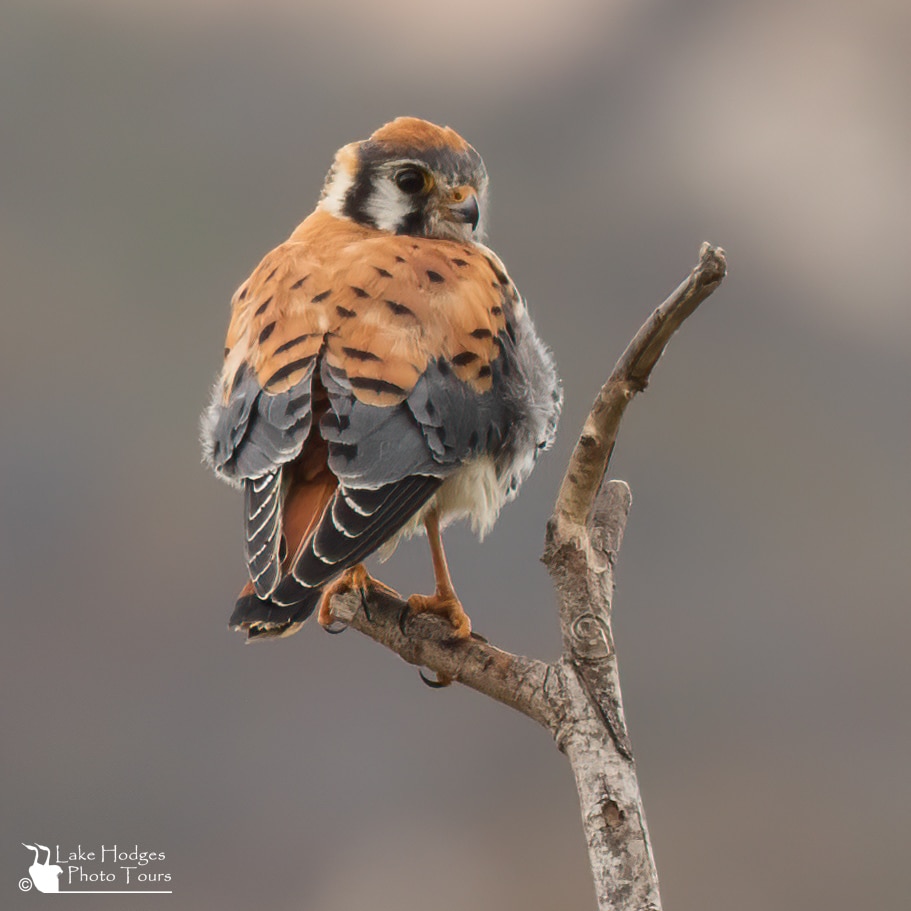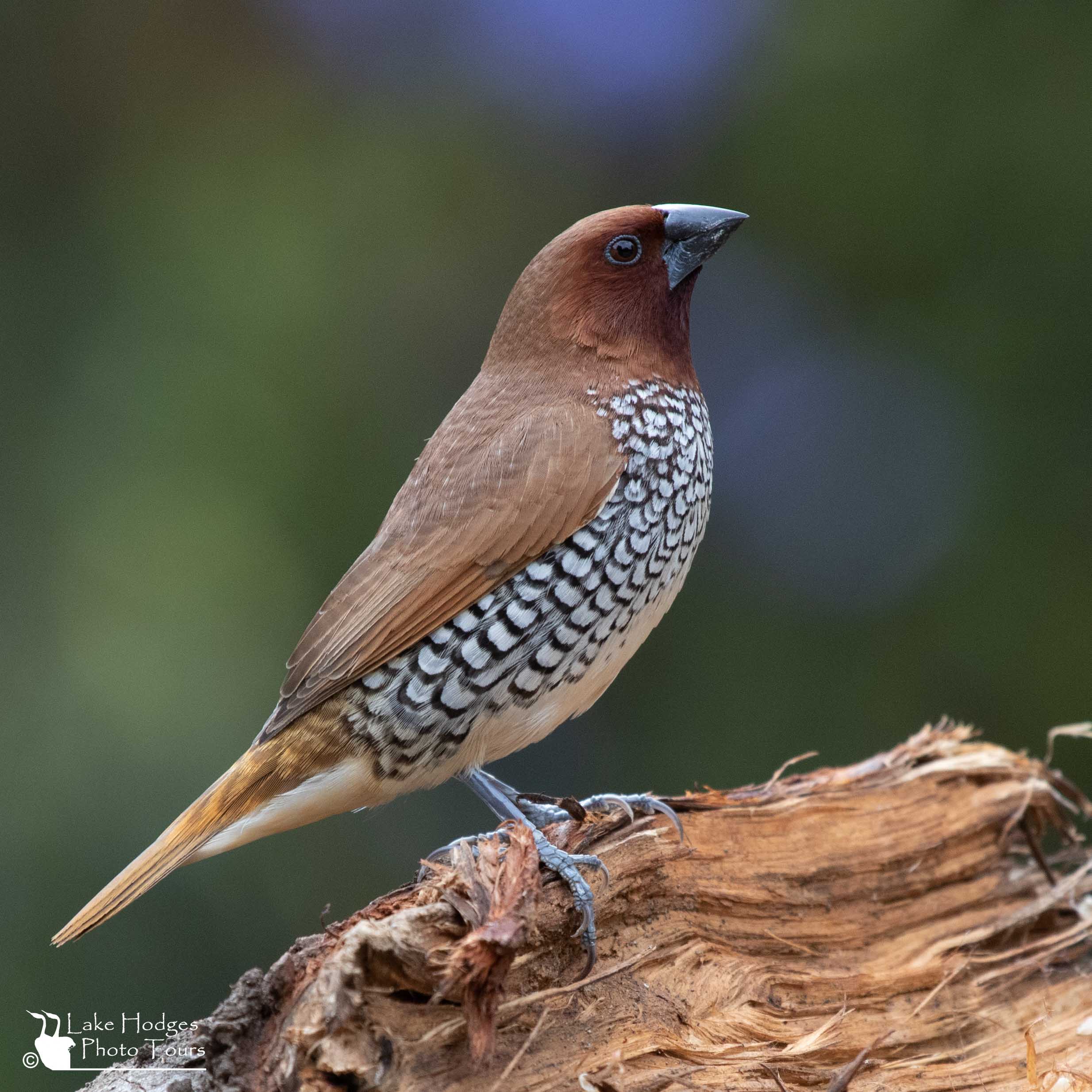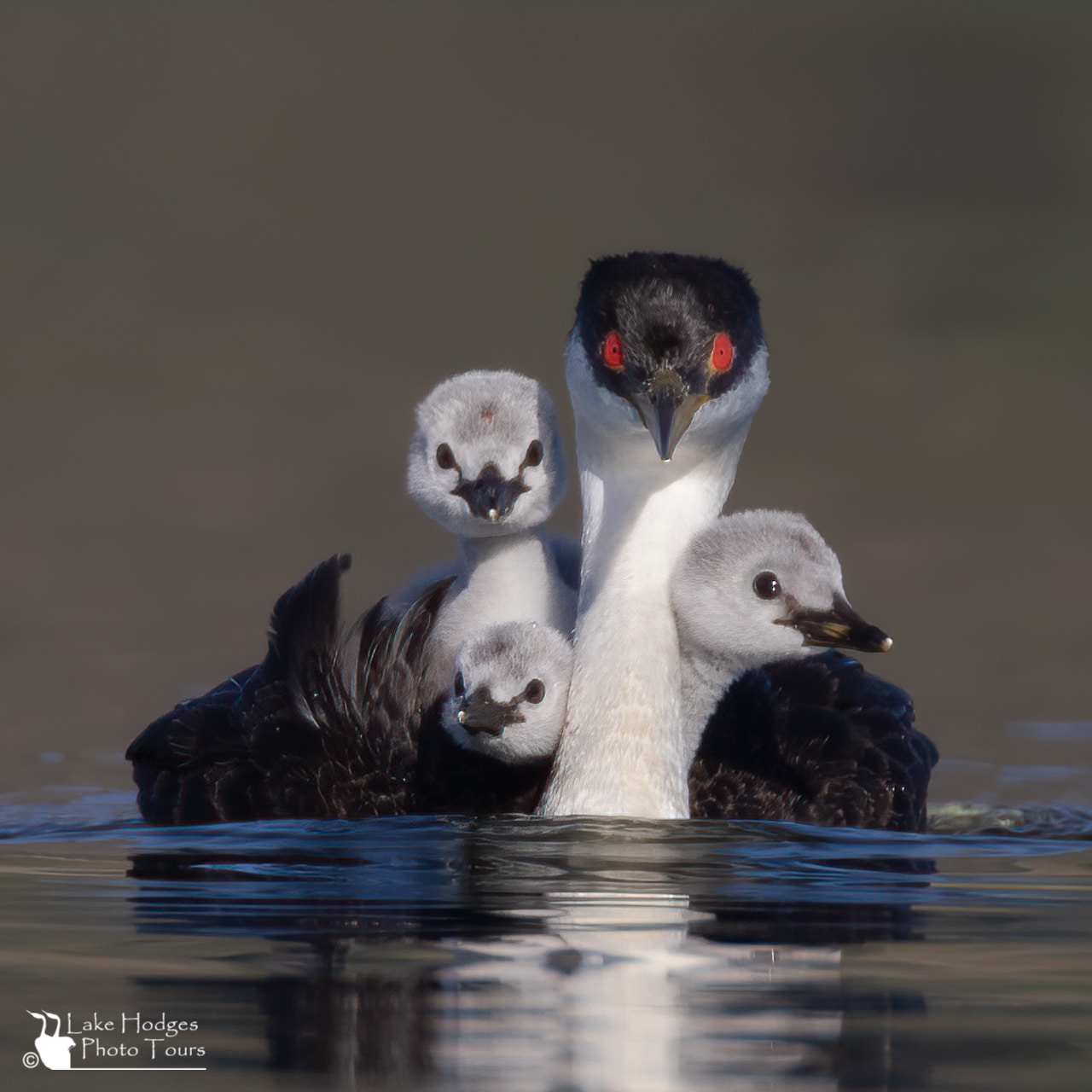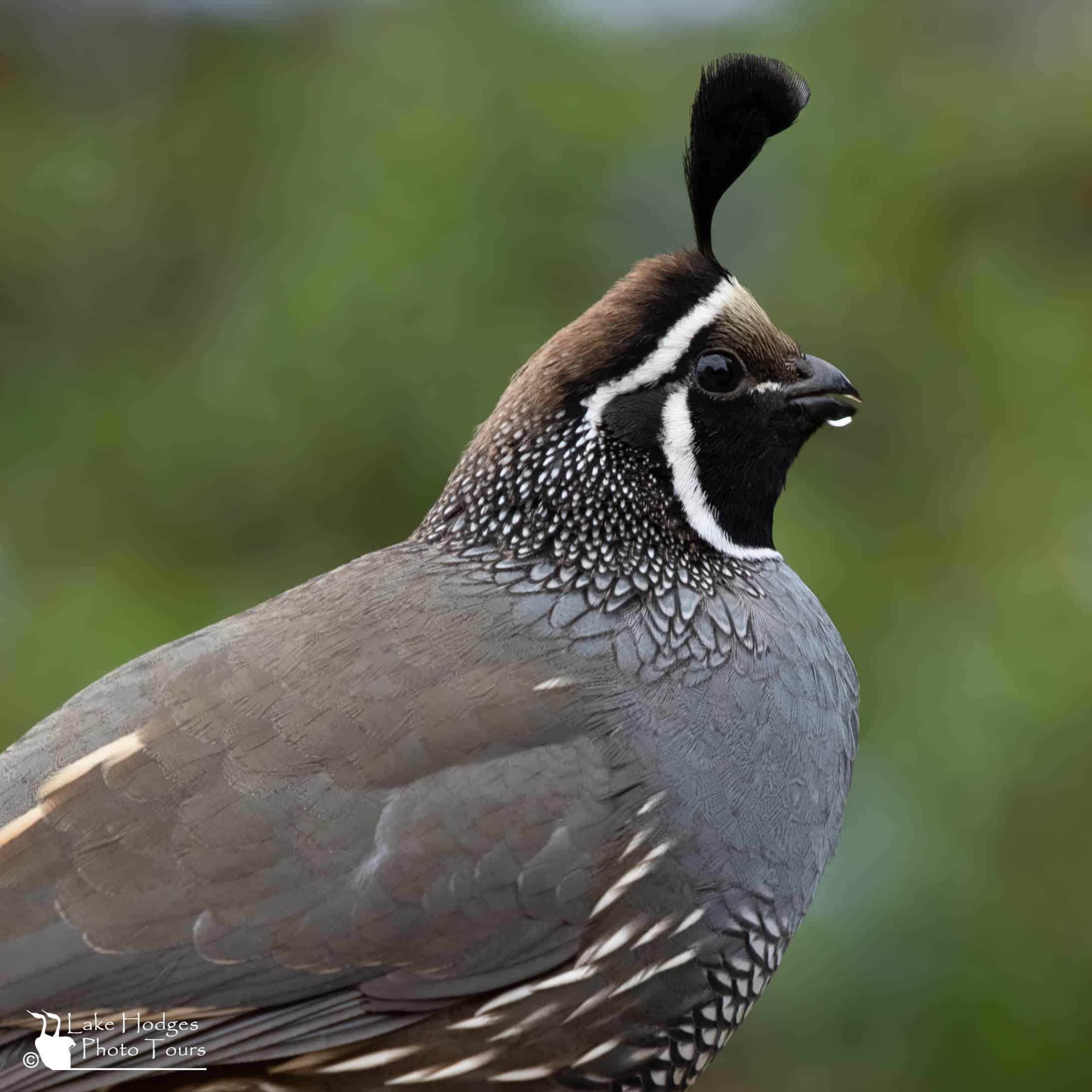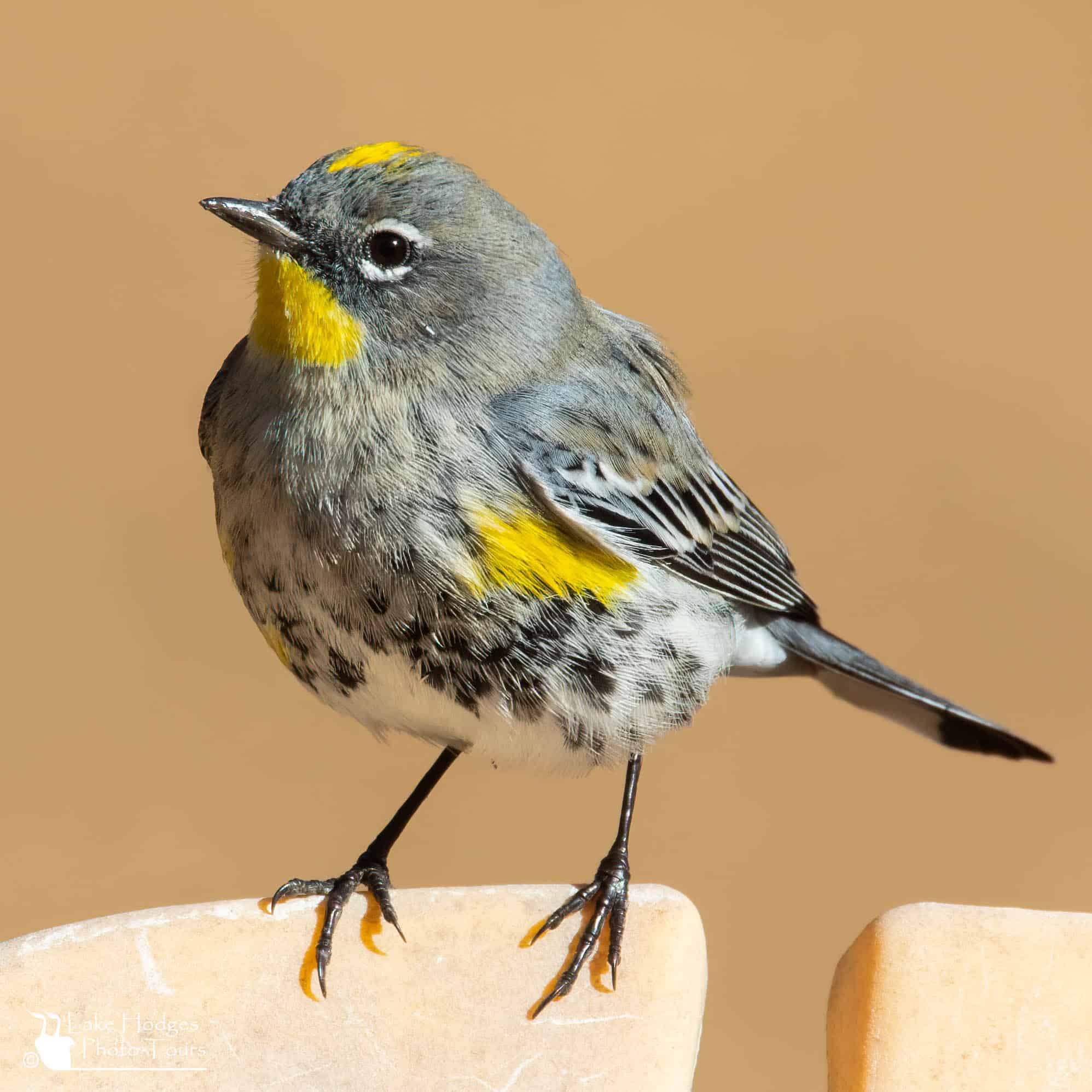As promised, here is the 2nd installment of our recent Patagonia trip.
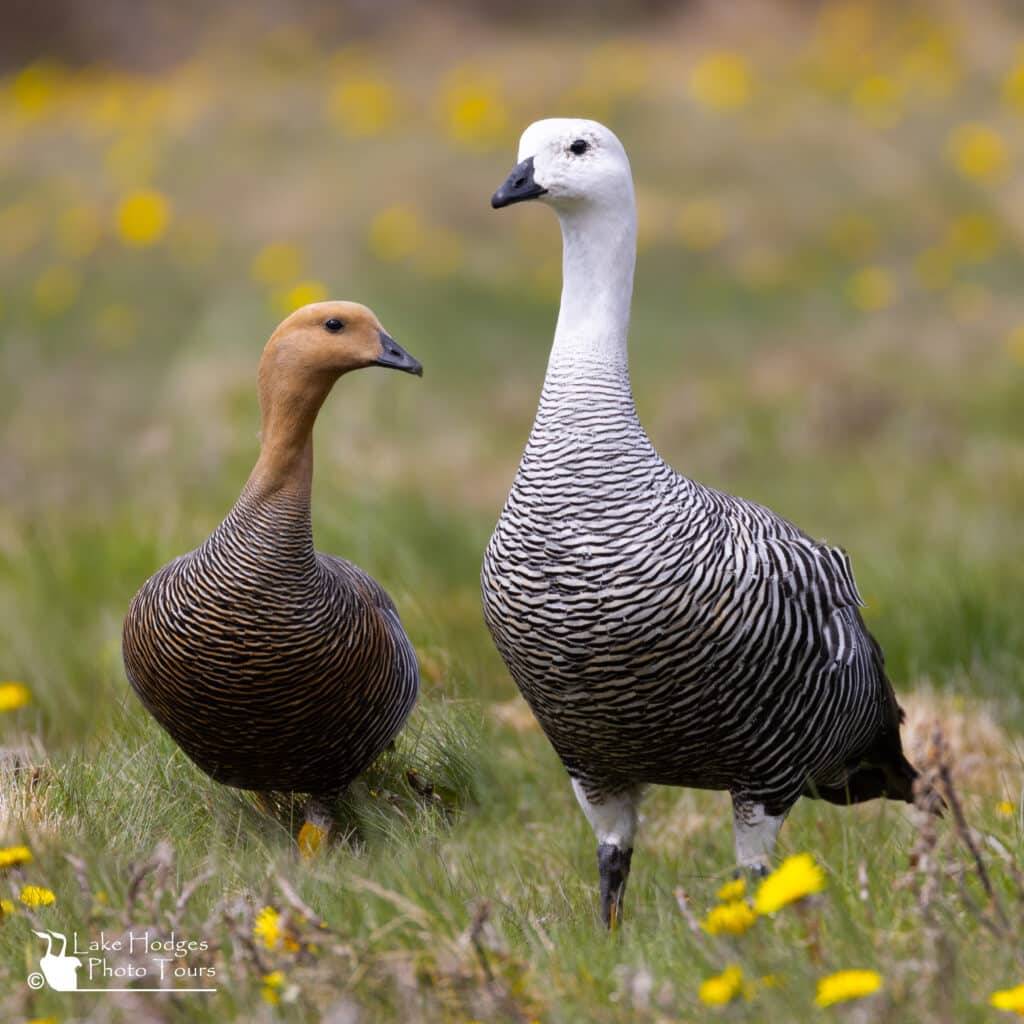
Another bird you are likely to see all over Patagonia is the Upland Goose. We saw them from as far as the very southernmost point in our trip, Bahia Lapataia, to the northern most point, Perito Moreno, (the town, not the Glacier).
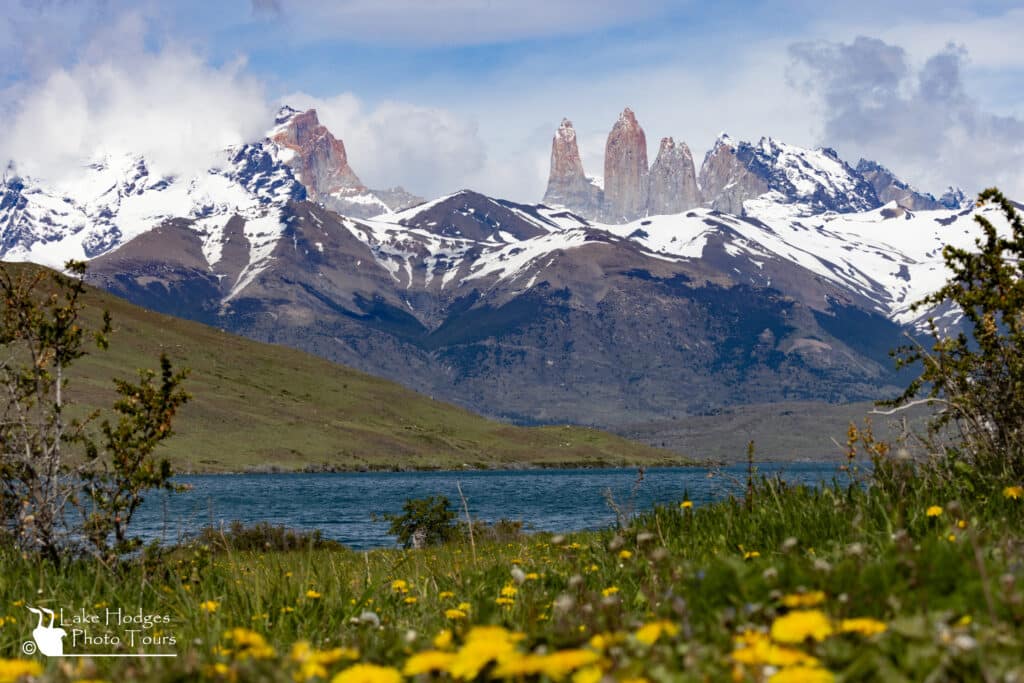
Another day in Torres del Paine National Park. It’s a good idea to schedule a few days, a better chance of getting at least one day of decent weather. If you look closely at the photograph you can see where Torres del Paine got it’s name. Loosely translated Torres del Paine means Blue Towers. Under certain lighting you can see the blue tinge on the towers of rock.

And it can be a very foreboding place. Before leaving for the trip, one of our friends described how windy it can be, but no description can do it justice. In some areas the wind was so strong that it could literally blow you over, and we were at the base of the massif. We simply couldn’t imagine the conditions on this distant cornice!
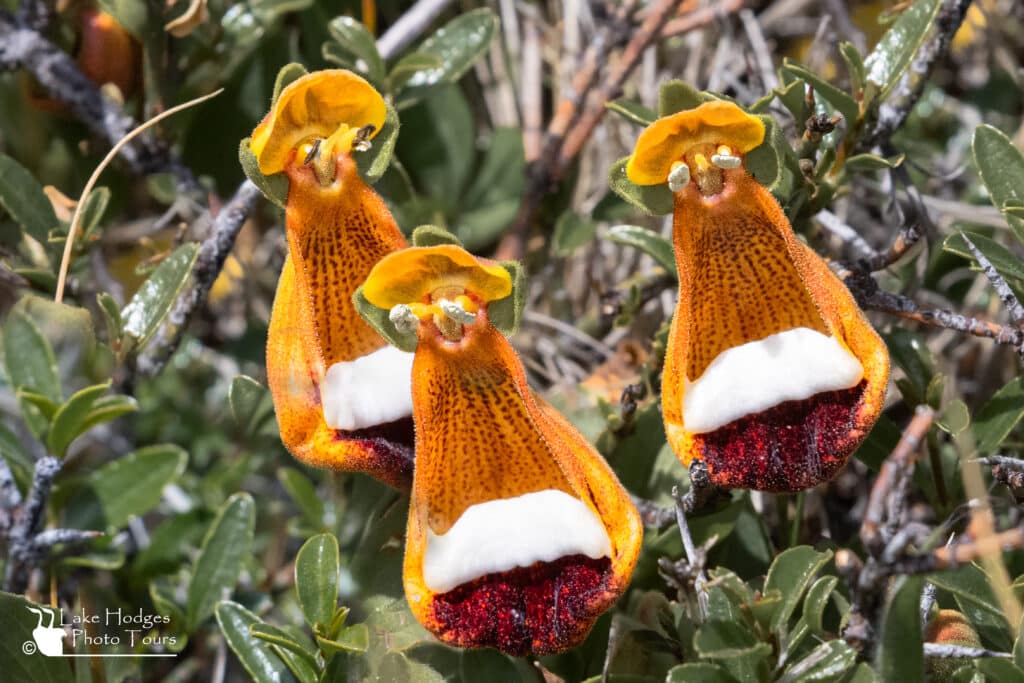
The Virgin Slipper or Sand Lady’s Slipper is one of the most unusual flowers we’d ever seen. And even more amazing is that it can flourish in such an unforgiving environment.
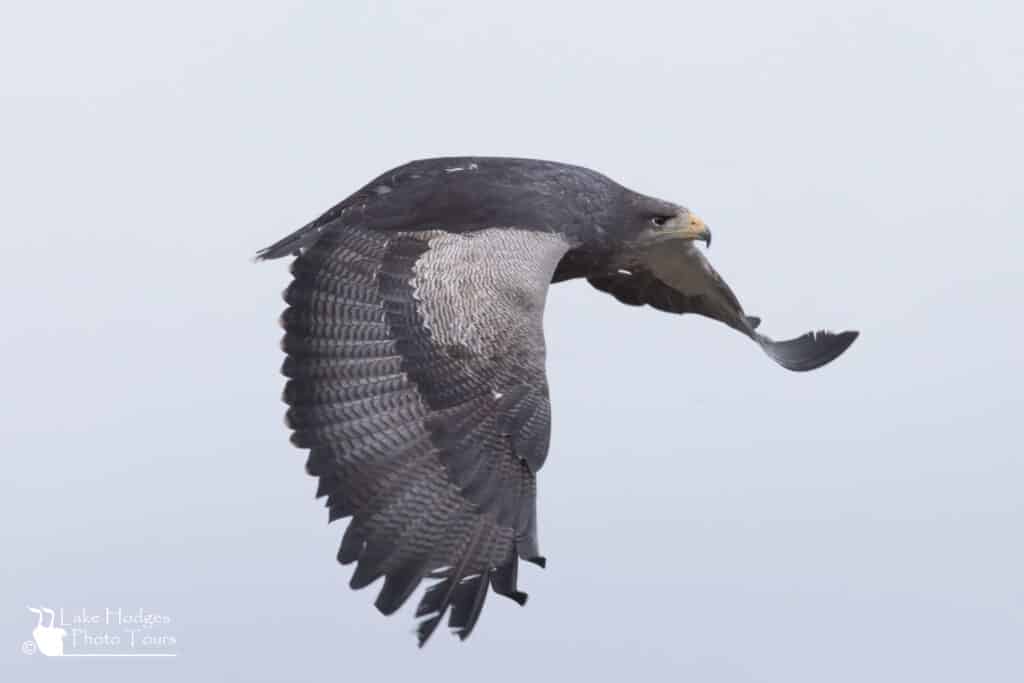
While in the park another Black-chested Buzzard Eagle gave us a fly by before being pestered by a Cinereous Harrier. The peculiar thing about this eagle is that the immature bird has an average size tail and tail feathers, but on the adult the tail is very short and hardly discernable.
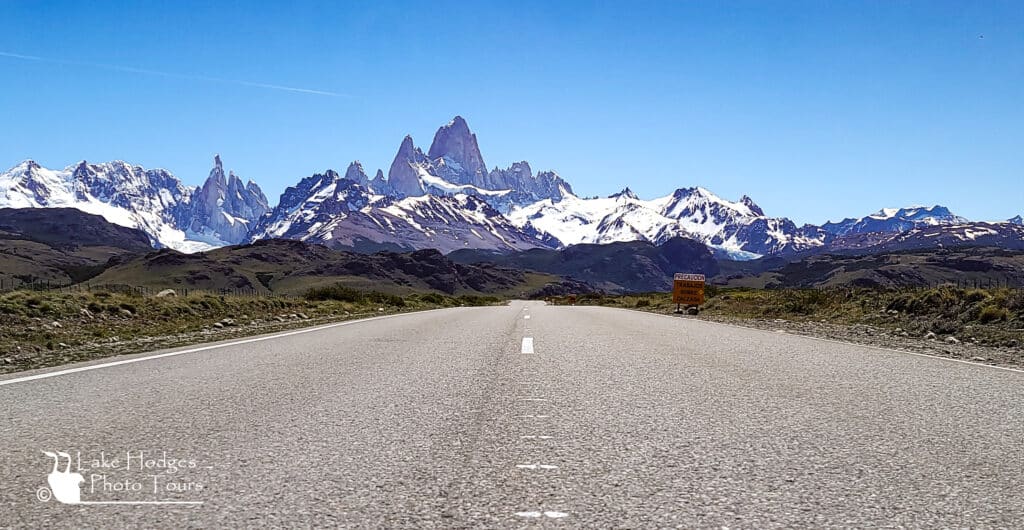
Back across the border to Argentina and to the Mt Fitzroy Massif adjacent to El Chalten. We were told to REALLY appreciate the peak since it is often partially or completely obscured by clouds. As luck would have it, on the drive we could see the peak from approximately 100 miles away. We were about 40 minutes from town when we decided to pull over and take this shot.
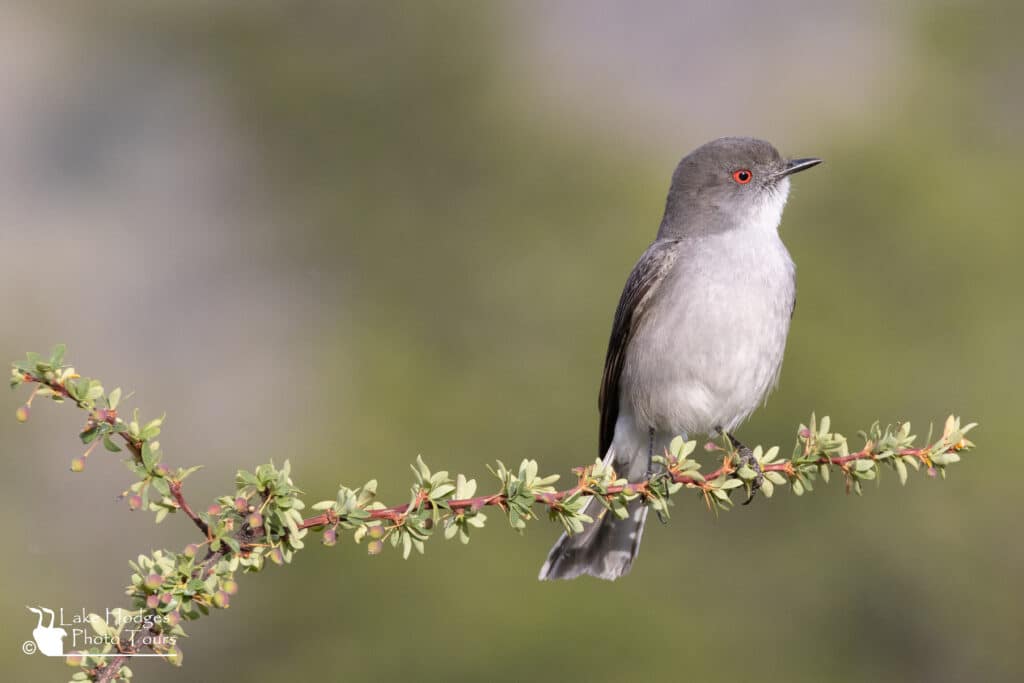
Another common bird that we saw was the Fire-eyed Diucon. So again, we simply waited for a good opportunity. We were actually looking for Condors when this perfect little frontlit bird landed on a twig a few feet from us.
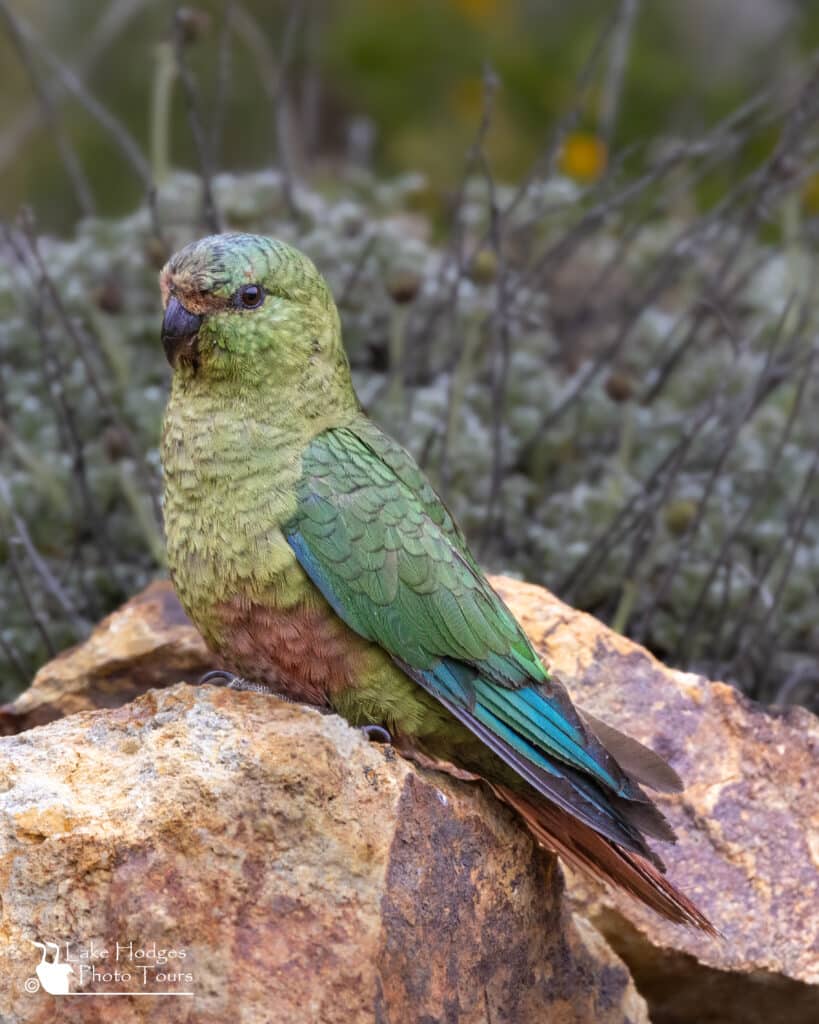
One of the biggest surprises was seeing a group of these. It appears Austral Parakeets are quite happy and in their element. The wind, rain and near freezing temperature didn’t faze them at all.
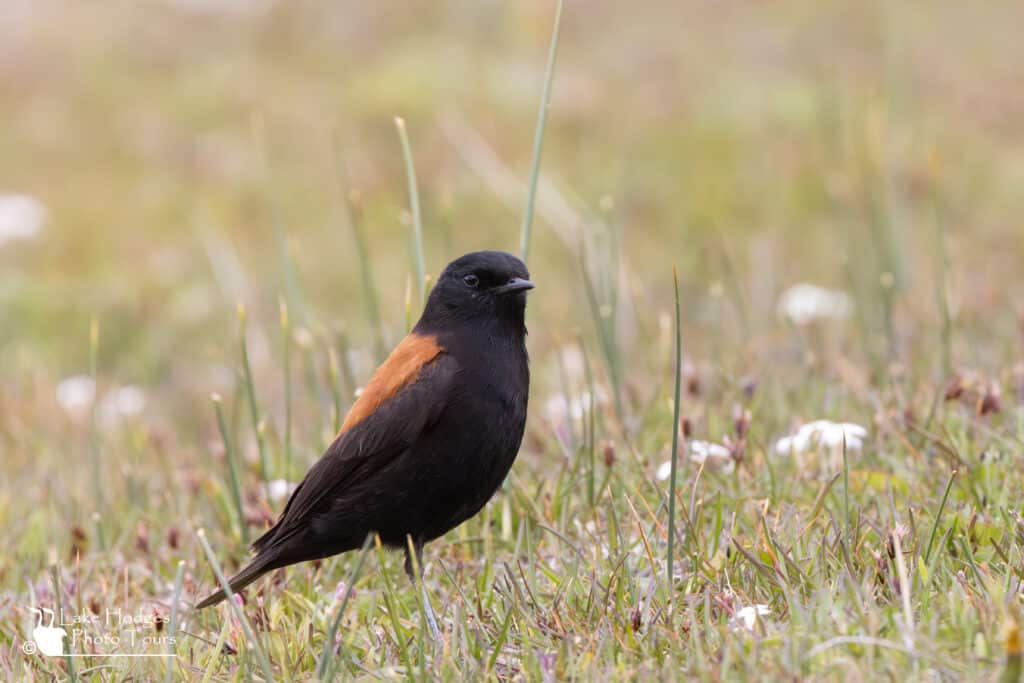
The Argentinians take their conservation seriously and have done a great job at creating areas where the wildlife can thrive. A good example was the area in which we saw this Austral Negrito. There were signs posted for no dogs and as we walked the area, sure enough on the ground next to a tuft of vegetation there was a nest with 2 chicks being fed by its mate.
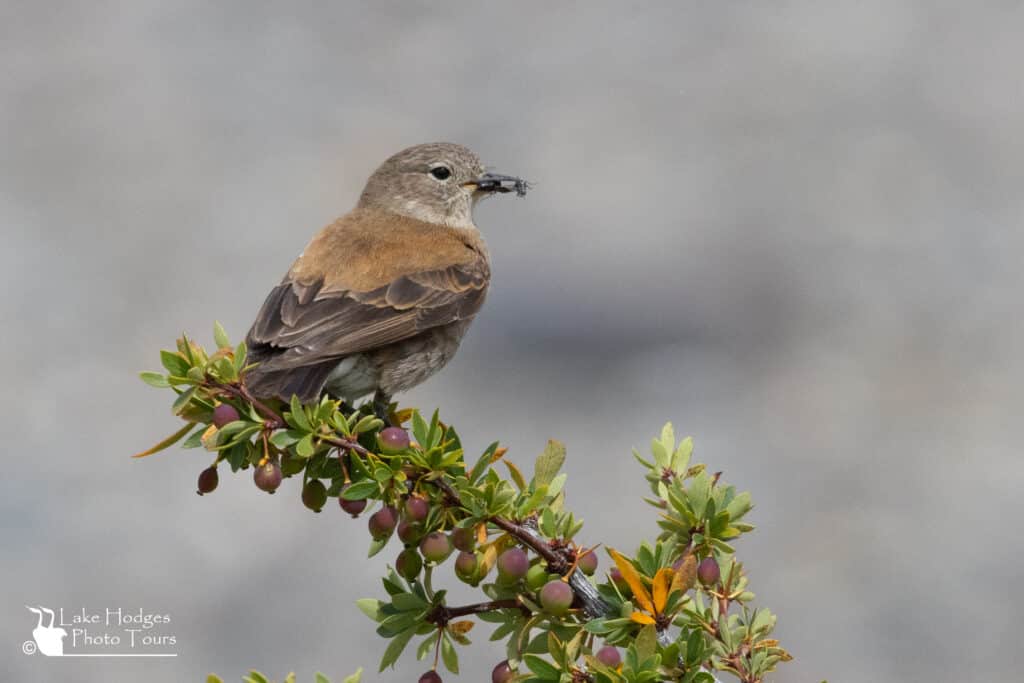
Here’s the female with a beak full, about to hop down to the nest. It’s always a privilege to watch wildlife going about its business.
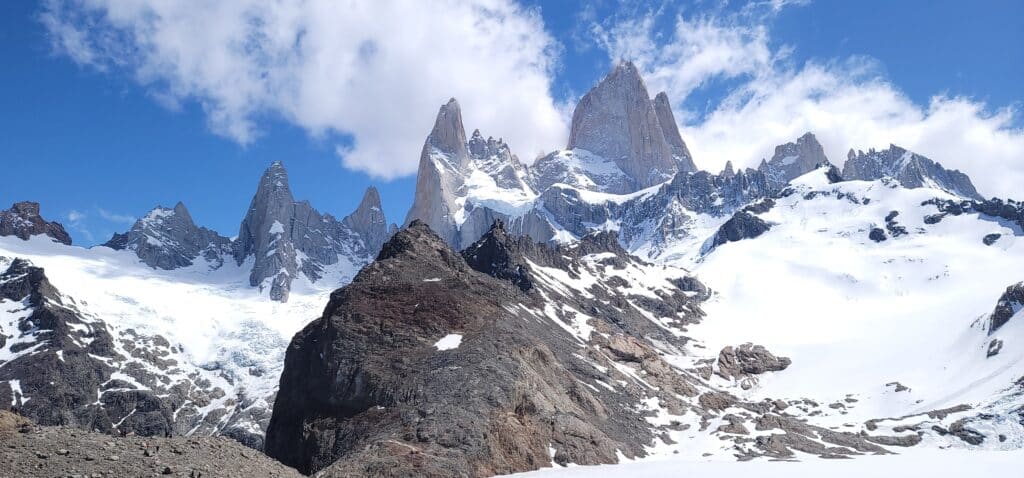
They weren’t kidding when they said the tops of the mountains are obscured most of the time. We decided to do one of the more popular day hikes to the base of the Fitzroy Peak. On the way to the turnaround spot, the top was completely or partially enshrouded in clouds. Then on arriving at the turnaround spot, there was a brief 15 minute window when the clouds cleared 🙂
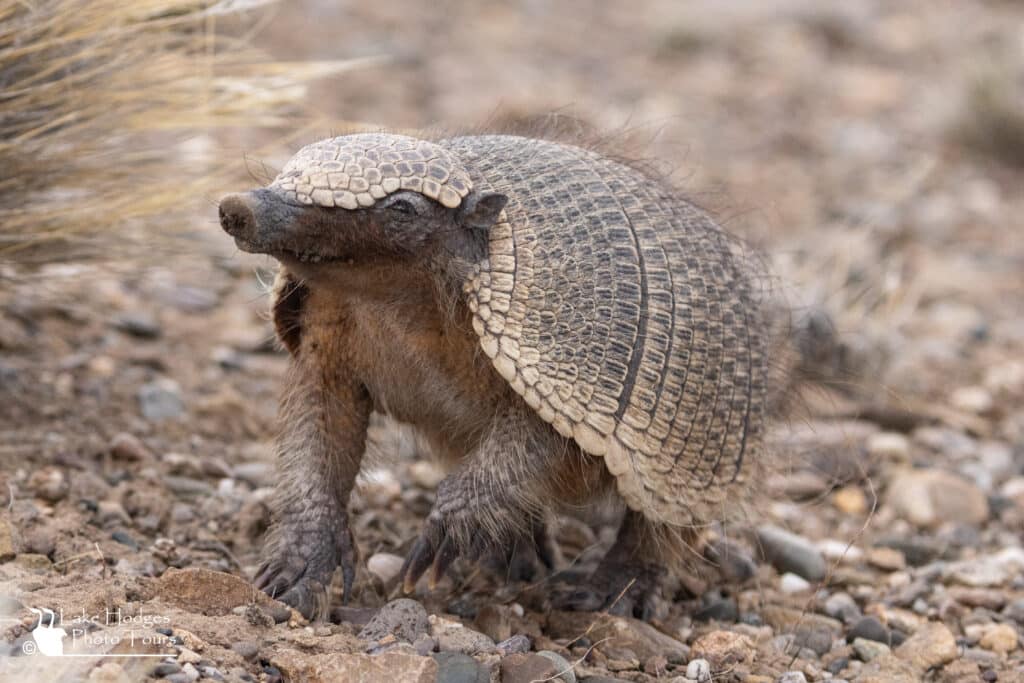
Since arriving in Patagonia we’d heard that the Pichi, or Dwarf Armadillo was common and easily found. Up to this point in the trip we hadn’t had much luck. We were driving north to Perito Moreno when we saw something scurrying around the edge of the highway. On closer inspection we saw a large number of crickets all over the road and verge, a mini swarm so to speak, and the armadillo was enjoying the buffet. I stepped out the vehicle and followed it around to snap a few pics which wasn’t as easy as it sounds, it moved surprisingly fast. For a split second it raised it’s head to sniff the air and take a quick look at the towering man next to it 🙂 Other than that, it seemed oblivious to my presence and simply carried on scurrying around.
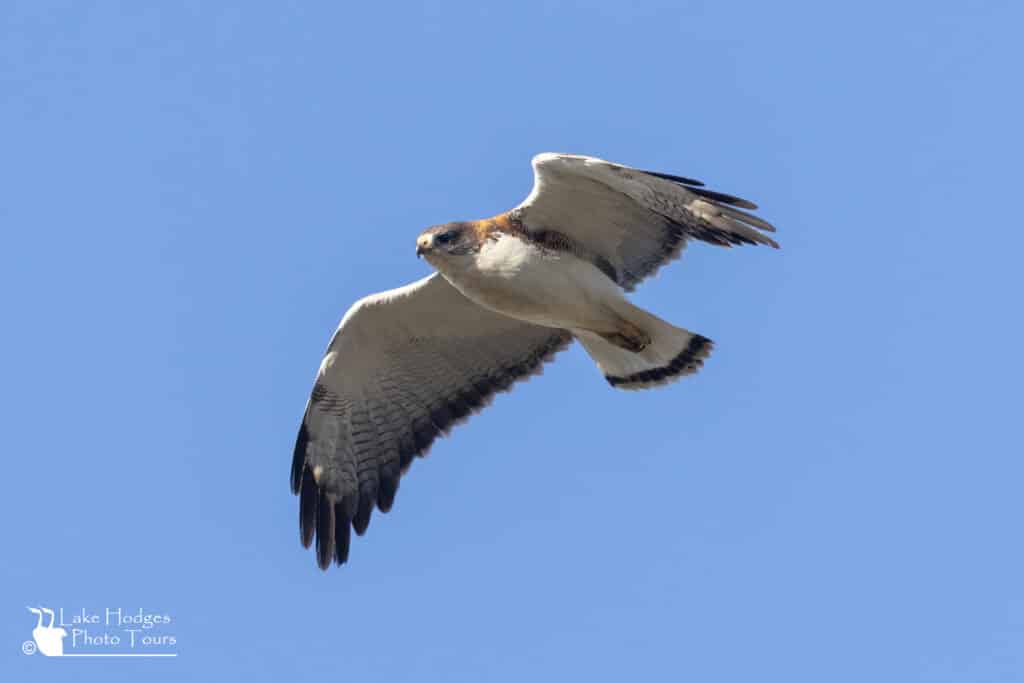
While in the Perito Moreno area we saw a few Variable Hawks. They are a similar sized Buteo to the Red-tailed Hawks we have here in California, but that’s about it. Their plumage is strikingly different.
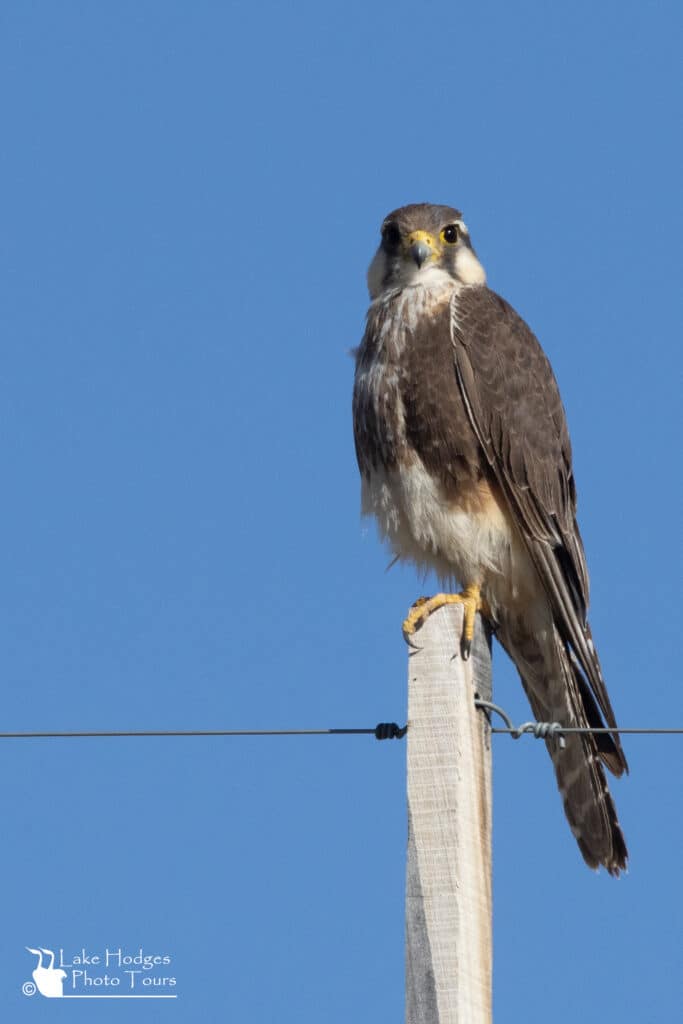
After a couple of nights in Perito Moreno, (more about this at the presentation), we needed to catch a return flight to Buenos Aires. On the way to the airport we found another raptor. If you look hard enough, you can find these in other parts of the US. But we don’t have them here in California. We saw both an adult and this immature bird. The Aplomado Falcon.
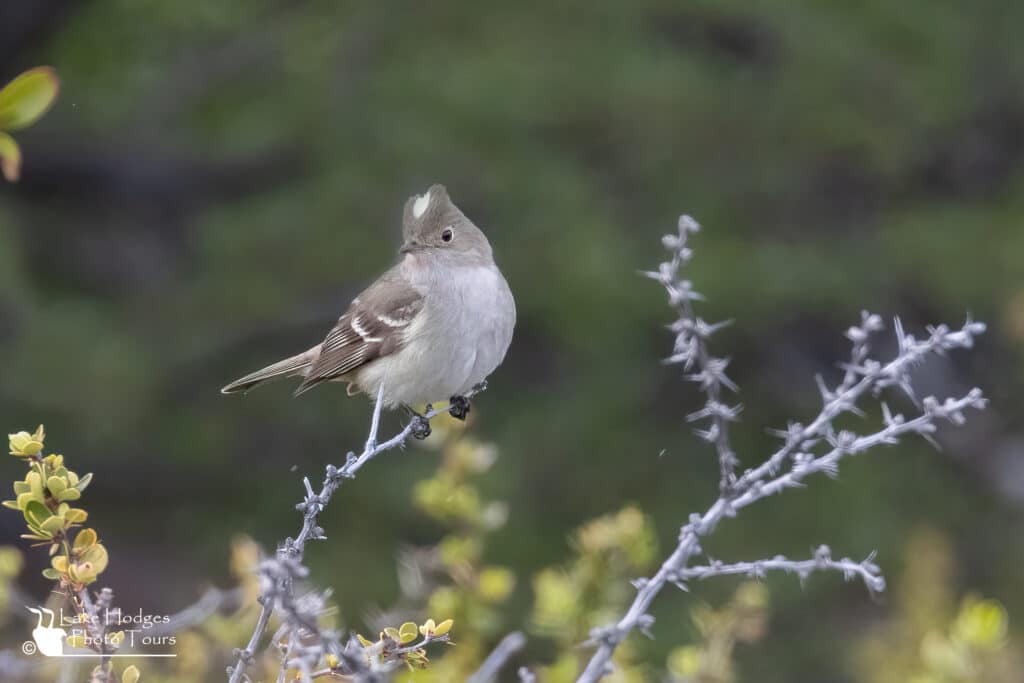
For most of the trip when in a wooded area we would often catch a fleeting glimpse of a small nondescript bird. For most of the trip I managed to catch a few blurry images or the occasional sharp image obscured by leaves and brush. Finally, after several attempts, I managed to get a shot of this little tyrant flycatcher, the White-Crested Elaenia with its crest visible.

In most shallow ponds up and down Patagonia we saw Chilean Flamingos. Having spent close to a month around the same general area we expected to see an increase in numbers and maybe some courtship behavior. However, according to the Patagonian bird specialists that we spoke to, these Flamingos actually travel north to their breeding grounds west of Buenos Aires to breed.
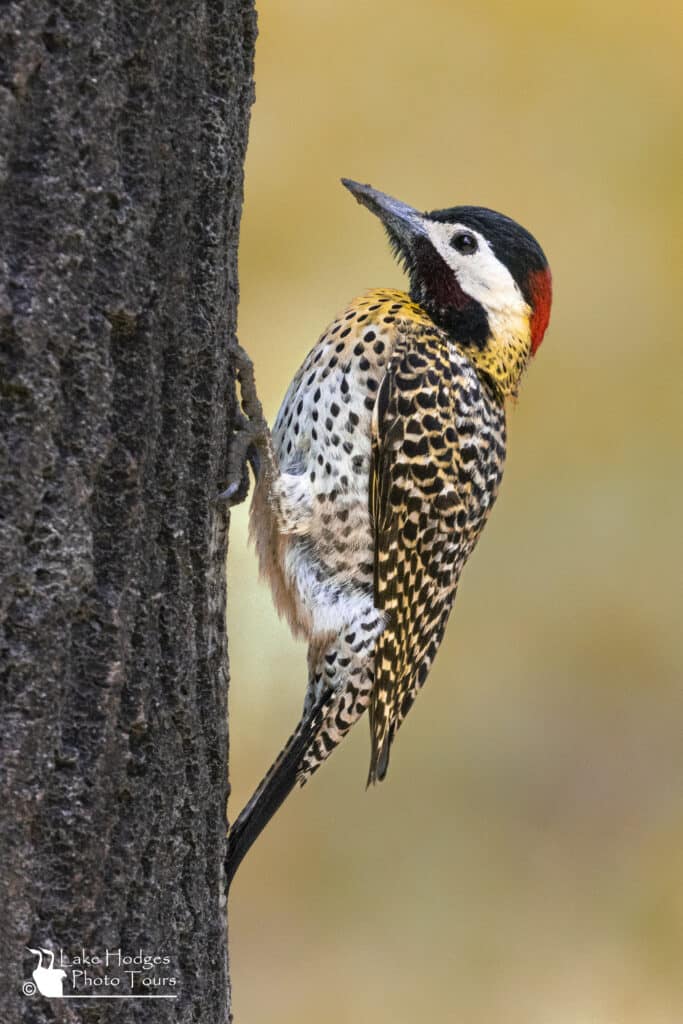
By the end of the trip we’d already seen the elusive Magellanic Woodpecker and the Chilean Flicker so were not specifically looking for more woodpeckers. So we were pleasantly surprised at seeing a beautiful male Green-barred Woodpecker in Buenos Aires. And he wasn’t at all shy and posed nicely 🙂
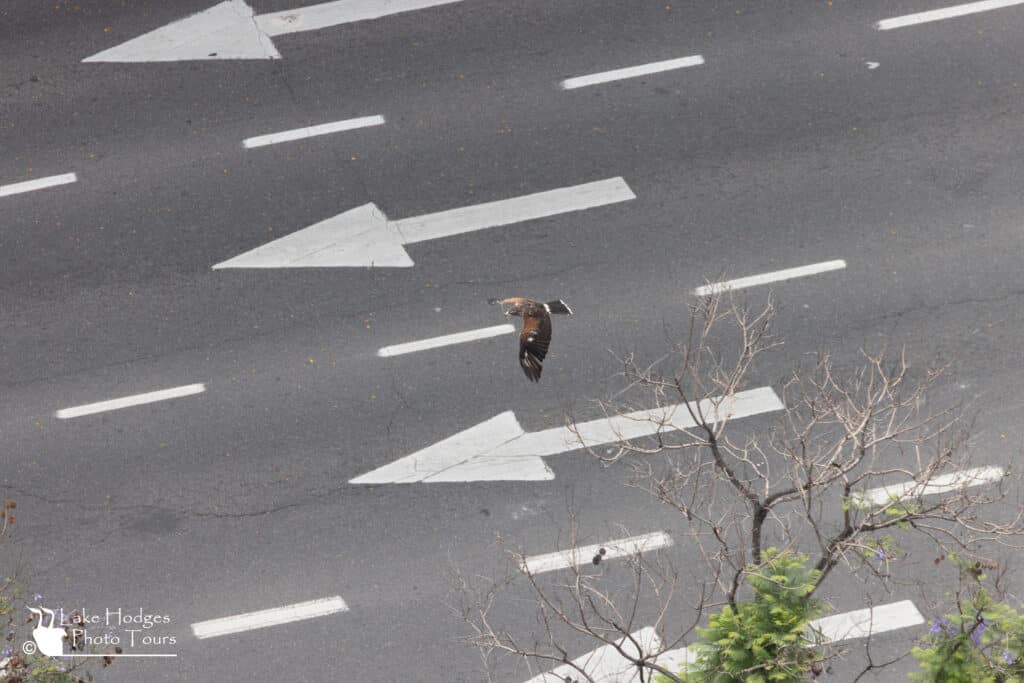
When we first passed through Buenos Aires a month ago we couldn’t believe our eyes, a pair of adult Harris’s Hawks flew past our hotel. They couldn’t have been more than 10 yards away. Of course, I didn’t have my camera handy, as this was the last place I expected to shoot some raptors. As with many metropolitan areas, we thought we may glimpse a Peregrine, but nothing more. Since we had one more night in Buenos Aires before leaving I perched myself atop the hotel for an hour to see what I might see. Low and behold I saw at least 2, as many as 5 Harris’ Hawks flying directly below me. As can be seen, one aspect of adapting to City life is following the rules of the road.
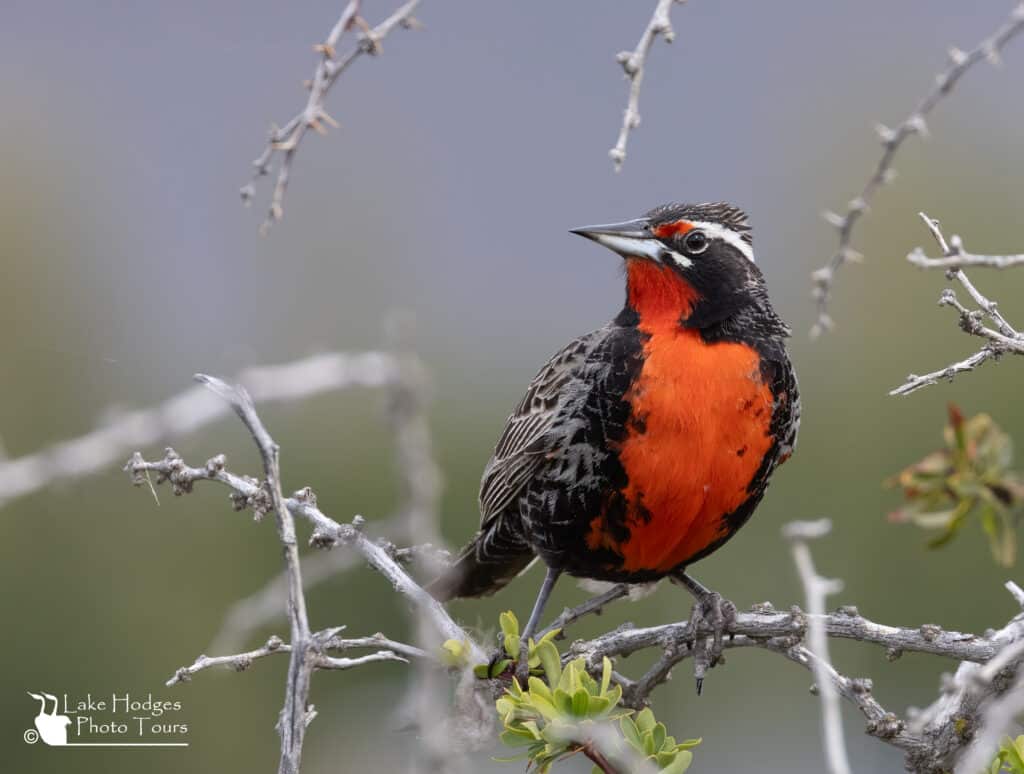
If you enjoyed these last Patagonia blog entries then you’ll likely enjoy the presentation that we’ll be putting on at 7pm on the Jan 26th here at the Old Firehouse in Del Dios, 20155 Elm Ln, Escondido, CA 92029. Please put it on your calendar and come on by. There’ll be a video and slide show along with the presentation followed by a Q & A, some snacks and drinks.
The Lake is closed for the season, opening again in February 7th.
Each winter the Lake closes to boating giving the local wildlife a breather. The fish have an opportunity to spawn, wintering and migrating birds use the lake as a pit stop and if conditions present themselves, Grebes will build nests, lay eggs and produce chicks. Weather permitting, opening day this year will be February 7th.
Feel free to share on your preferred Social Media.

